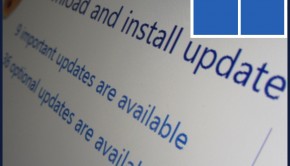How To Stop Windows 10 From Restarting Automatically to Install Windows Updates
Reader Question:
“Hi Wally, I want to know how to stop Windows 10 from restarting automatically. I know it is caused by Windows update. I don’t want to avoid updating Windows, I just want to avoid the automatic restarts. Thank you.” – Bradley J., USA
Before addressing any computer issue, I always recommend scanning and repairing any underlying problems affecting your PC health and performance:
- Step 1 : Download PC Repair & Optimizer Tool (WinThruster for Win 10, 8, 7, Vista, XP and 2000 – Microsoft Gold Certified).
- Step 2 : Click “Start Scan” to find Windows registry issues that could be causing PC problems.
- Step 3 : Click “Repair All” to fix all issues.
Setting up weekly (or daily) automatic scans will help prevent system problems and keep your PC running fast and trouble-free.
Wally’s Answer: Some users are not happy about how updates work in Windows 10. It downloads updates and automatically restarts the computer to install them. Although options may seem limited, you can still control and disable Windows updates.
Problem
Windows 10 automatically restarts to install windows updates.
Solution
Here are some ways to fix the Windows 10 automatic reset problem.
When and Why Does Windows 10 Reboot?
Windows 10 restarts the computer to complete installing a Windows update. Some Windows updates require the computer to be restarted in order to be installed. By default, Windows does not ask the user, but there is a way to change that.
Have Windows 10 Notify You When it is About to Restart
Windows can notify you and allow you to reschedule the update. But if you don’t reschedule the update, then it will restart automatically after a few notifications. Here’s how to do it:
Press the Windows Key, and click Settings

Click Update & security
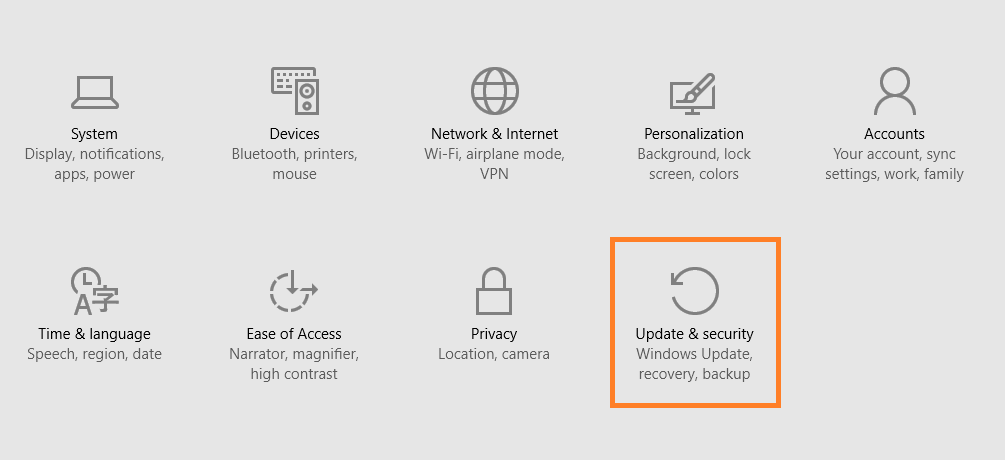
On the Windows update tab, click Advanced options
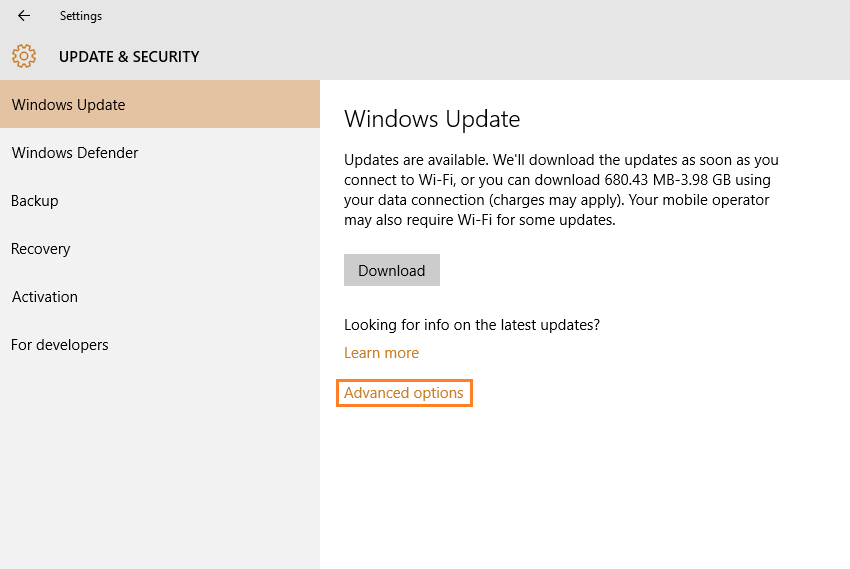
Under Choose how updates are installed, select Notify to schedule restart. You can also choose to check the Defer updates option to only install updates after a few months have passed. Deferring updates does not affect security updates.
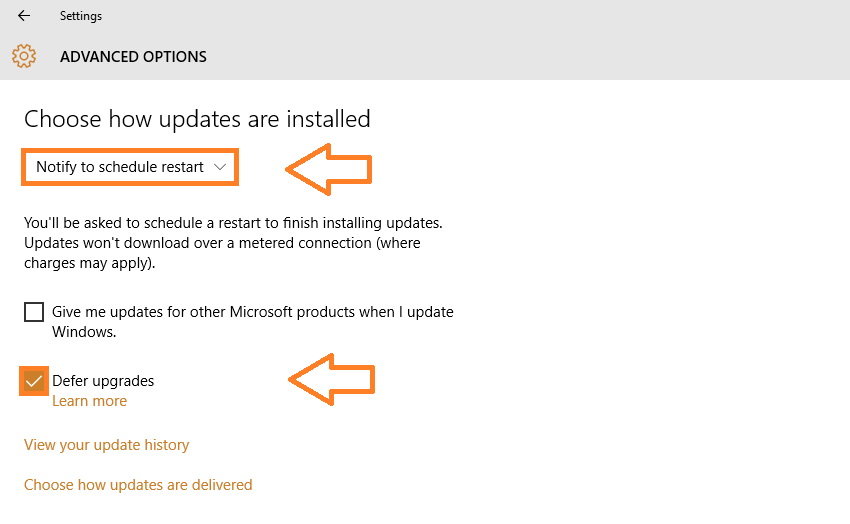
Switch Wifi Connection to Metered Connection and Avoid Windows 10 Updates Altogether
This is probably the closest thing to actually disabling Windows updates in Windows 10. You can set your internet connection to a metered connection and prevent Windows from downloading and installing Windows updates.
Windows thinks that a non-metered connection is a volume-based connection. That is why Windows 10 does not download updates if you turn this setting on. Windows will remember this setting every time you connect to the same Wifi connection unless you change its name or reset your router’s settings.
- Press the Windows Key and type wifi in the search bar. Now, click Change Wi-Fi settings.
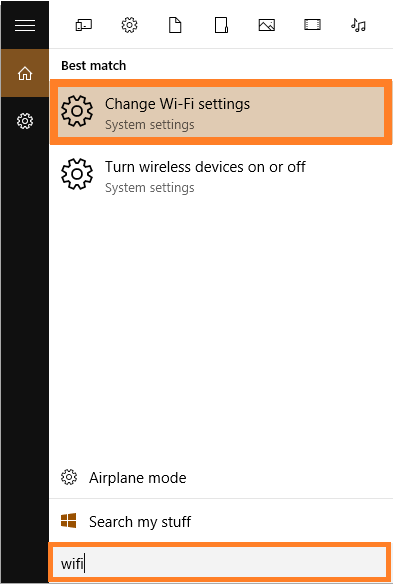
- Under Wi-Fi, click your internet connection and click Advanced options at the bottom.

- Turn Set as metered connection to On.
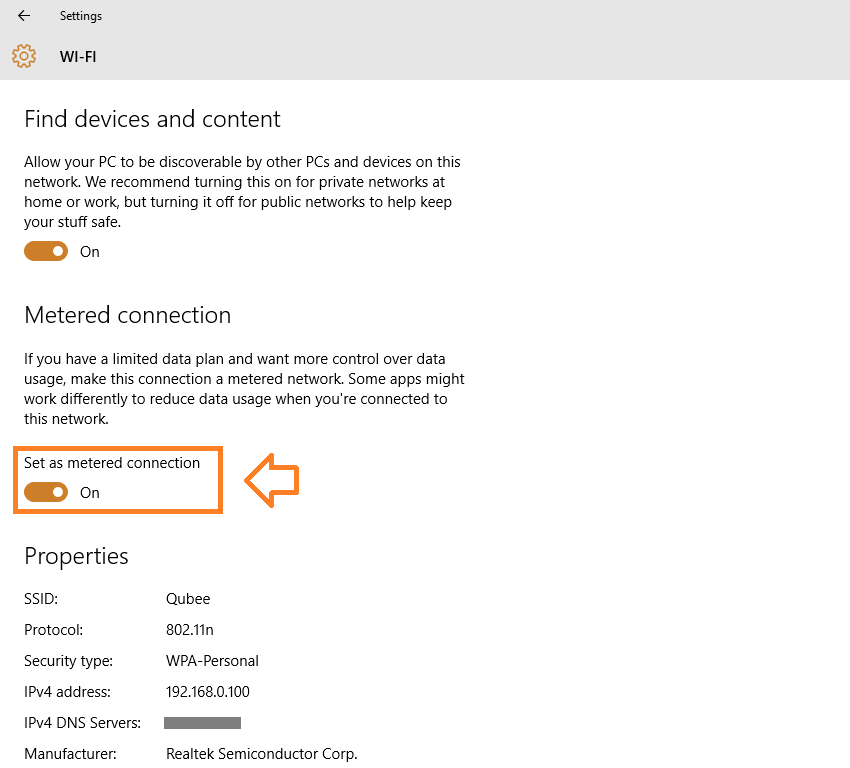
This should stop Windows 10 from using your internet connection to download updates. If you have any more questions, please ask us in the comments section below. Hope this helped, Have a nice day ![]()
I Hope You Liked This Blog Article! If You Need Additional Support on This Issue Then Please Don’t Hesitate To Contact Me On Facebook.
Is Your PC Healthy?
I always recommend to my readers to regularly use a trusted registry cleaner and optimizer such as WinThruster or CCleaner. Many problems that you encounter can be attributed to a corrupt and bloated registry.
Happy Computing! ![]()

Wally's Answer Rating
Summary: Every Windows Wally blog post is evaluated on these three criteria. The average of all three elements determines an "Overall Rating" for each blog post.

